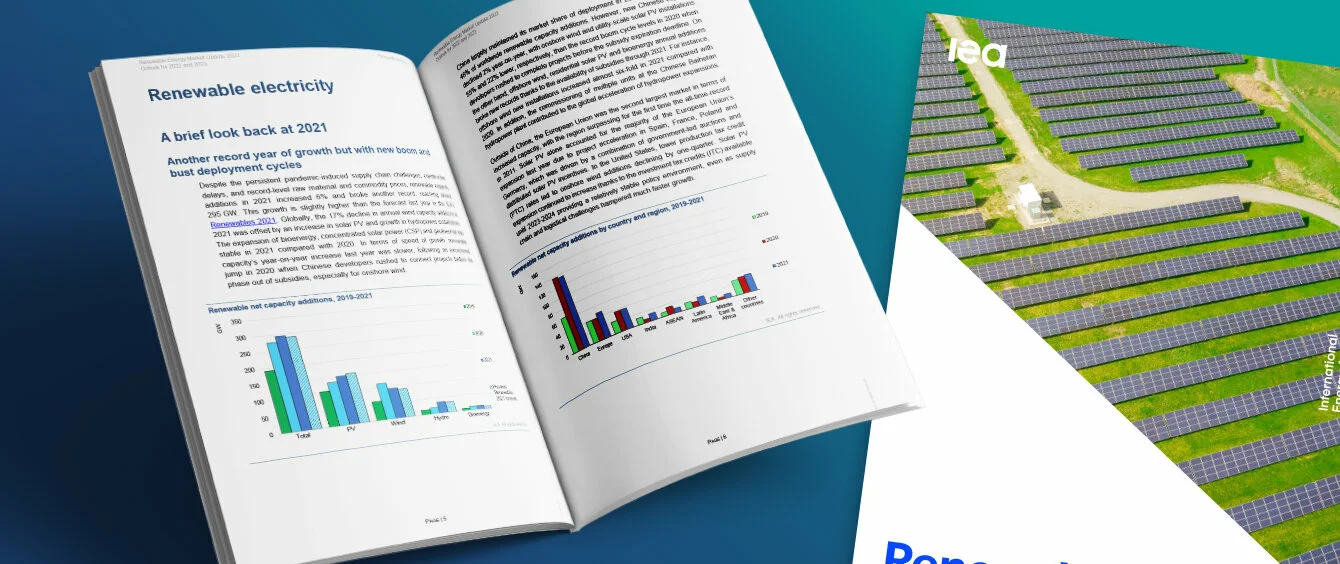Supply chain disruptions, rising raw materials costs and construction delays have all hampered the renewable energy industry in the last year, yet despite these headwinds, the sector set a record. New renewable energy capacity additions rose 6% to almost 295 GW worldwide, according to the International Energy Agency’s (IEA) Renewable Energy Market Update 2022, published in May.
Moreover, this year should see a second consecutive high with new additions rising 8% to reach 320 GW. Growth flattens in 2023, as less new hydropower comes online, wind additions stay steady, but solar PV continues to increase.
However, if governments rapidly implement new policies designed to accelerate the energy transition, new records could again be broken in 2023, the IEA says, making the next six months a critical period for the energy transition.
Deployment rates uneven
The IEA’s forecasts are higher than in previous updates reflecting strong policy support for renewables in China, Latin America and Europe, where Russia’s invasion of Ukraine has created unprecedented momentum towards improving security of supply.
Renewable energy delivers domestic, sustainable generation and, despite rising raw materials costs, has become even more competitive, owing to large increases in fossil fuel prices, the agency says.
However, progress is far from uniform. While China remains the largest market and should set a new national record this year, installations are forecast to fall in 2023. US installations are expected to be lower in both 2022 and 2023 than in 2021, owing to a combination of uncertain incentive extensions and trade policies likely to limit the availability of solar panels, the IEA says.
India and Brazil are expected to see dips in installation rates in 2023, while South-east Asian countries’ new capacity additions have fallen from a record 2020 and are forecast to decline further in 2022 and 2023.
The Middle East and North Africa, however, show strongly rising deployment rates through 2023, largely owing to new solar PV installations.
Policy certainty essential
Worldwide, different technologies continue to be heavily affected by the policy regimes governing their deployment.
In Europe, for example, solar made up the majority of new additions in 2021 and looks set to do so again this year and in 2023. This reflects faster policy implementation driving growth in Germany, the Netherlands, Poland, Italy and France. However, forecasts for onshore wind development have been revised down, owing to slow permitting in Germany, Poland and Italy.
Globally, renewables’ expansion fares best where continuous support provides financial visibility for developers, the IEA says. In contrast, short-term policy incentives and intermittent capacity auctions tend to create boom-bust cycles.
Next six months critical
The IEA notes that in first-quarter 2022, auction volumes – a key driver of new capacity installations – were the lowest globally since 2016, reflecting the greater geopolitical and macroeconomic challenges facing renewable energy developers. Low auction volumes are likely to impact installation levels post-2023.
In Europe, the IEA says renewables have the potential to reduce dependence on Russian natural gas significantly, although that potential varies from country to country. Momentum is already strong – the EU was the second largest market in terms of increased capacity in 2021 after China, with the region beating its previous record for new installations set in 2011.
Security of supply concerns are expected to maintain the push behind renewable energy deployment, but new capacity additions after 2023 depend critically on whether new and stronger policies are enacted and implemented by governments in the next six months, the IEA warns.
